
The World’s Greatest Sailing Spectacle
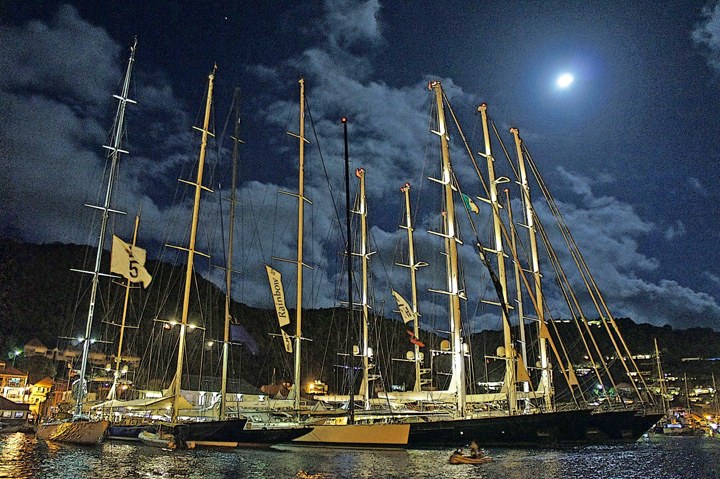
In the past we’ve called the St. Barth Bucket "the greatest sailing spectacle in the world" because of the number of great, large yachts — 11 of them over 155 feet — sailing in nearly ideal tropical conditions. Although the number of entries in this year’s 18th edition was down to 36 from the maximum of 43, we still believe it’s the greatest sailing show on earth.
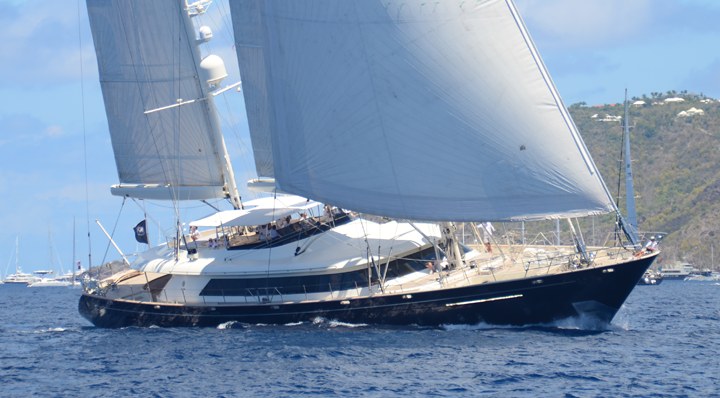
© Latitude 38 Media, LLC
One of the most attractive qualities of the Bucket is the variety of entries, a variety that mandated they be broken down into four divisions. There were 12 boats in the Grand Dames de Mer class, most of them two-story giants by Perini Navi, all of them over 150 feet. The 10 yachts in the Mademoiselles des Mer class included two big schooners, the 205-ft Athos and the 181-ft Adela, as well as a variety of other yachts including the Los Angeles-based Frers 100 Symmetry. The nine boats in the Les Gazelles des Mers were the speedsters, from the tiny — relatively speaking — Farr 100 Leopard 3, owner of the Fastnet Race record, to Hasso Plattner’s revitalized R/P and Baltic 147 Visione. And finally there was the J Class which, depending on who you talked to, was either the largest gathering of J Class yachts ever or the largest gathering since World War II. The Js were the only group to sail four races instead of three, and the only group to use the traditional racing format rather than pursuit racing.
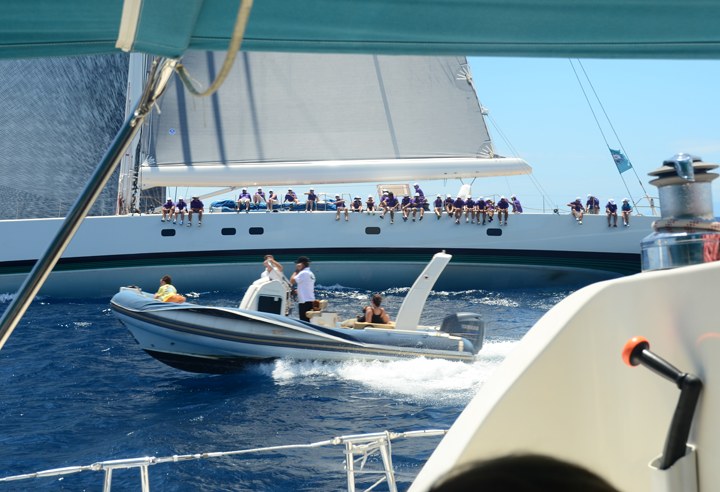
© Latitude 38 Media, LLC
The three days of racing featured just about every kind of weather condition. Day One saw brilliant sunshine, wind to about 11 knots, and smooth seas. Day Two brought torrential rain and light winds, followed by clearing and gusts to 28 knots. Day Three featured 11 to 15 knots of wind, gusts to 25, and lots of sun with some rain. The courses were 22 to 27 miles, and the active members of the crews arrived back to the docks beat.
Unless you’ve been to a Bucket, it’s hard to appreciate how massive and how beautifully maintained these yachts are. The 289-ft Maltese Falcon, which Belvedere’s Tom Perkins had built and owned before selling her to Cypriot hedge fund manager Elena Ambrosiadou, is naturally very large. But even the much smaller Perini Panthalassa displaces 540 tons!
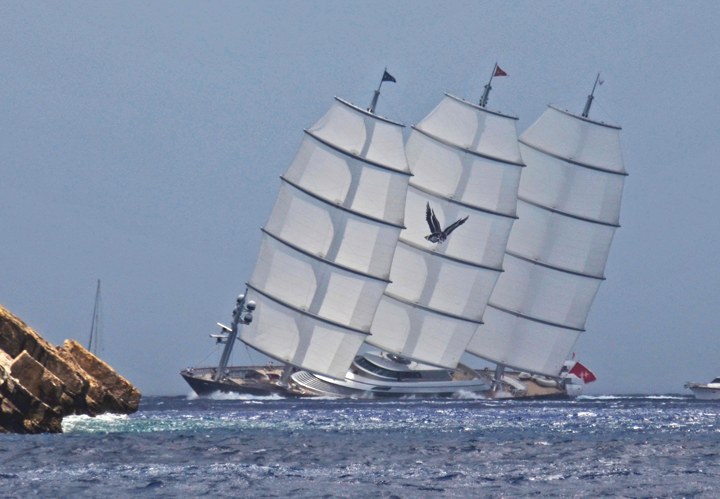
© Latitude 38 Media, LLC
Despite the fact that participants are allowed to use electrical and hydraulic power assists, it takes a navy to run almost every one of these boats. For instance, repacking the spinnaker on the 154-ft ketch Rebecca is a 25-person job, and stretches from the bow to the stern and halfway up the boat again. The sail inventory sitting on the dock for Jim Clark’s J Class Hanuman was bigger than a Volkswagen bus.
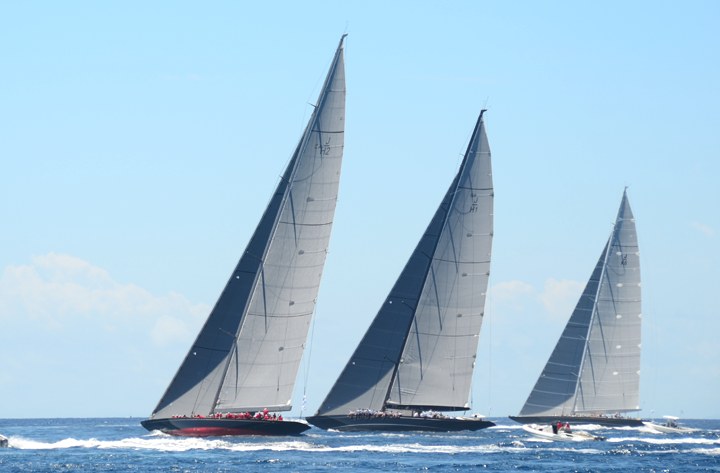
© Latitude 38 Media, LLC
These are not the kind of boats that can be raced well by family and friends, so top racers are imported from around the world to man the skill positions. Not only do they have to be smart and strong, they have to be fearless. After one race, we watched a crewmember of the J Lionheart swinging in as much as a 20-ft arc about 120 feet above the deck. He was up there for about 40 minutes in all, replacing lines, untwisting halyards, and getting slammed into the mast. Did we mention that the J Class boats race without lifelines?
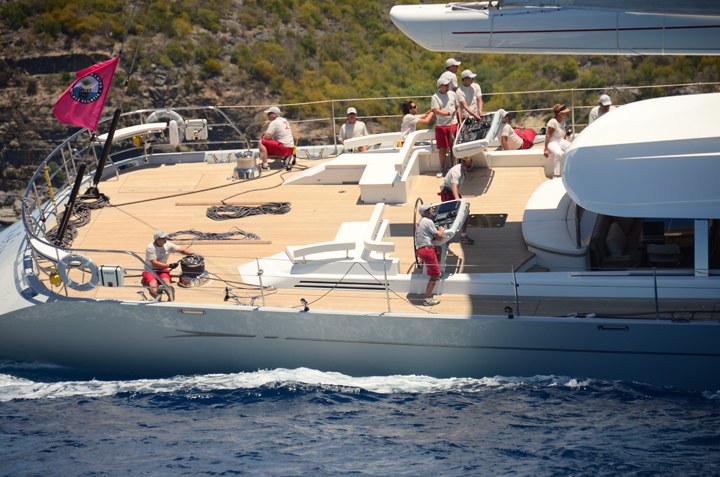
© Latitude 38 Media, LLC
Given the large sizes of everything and the tremendous loads, it’s not unusual for sailors to get hurt, even in the most banal ways. Halfway into the last race, the 205-ft schooner Athos dropped out and rushed to the dock with an injured crewman. One of the crew later told us what happened. "We were hit by a big wave, and a pile of sails fell over on the leg of one of the crew. Despite the fact that the guy, a captain of a big Jongert, is very big and strong, the falling sails tore all the ligaments in his leg. He was in such pain that he had to be given morphine."
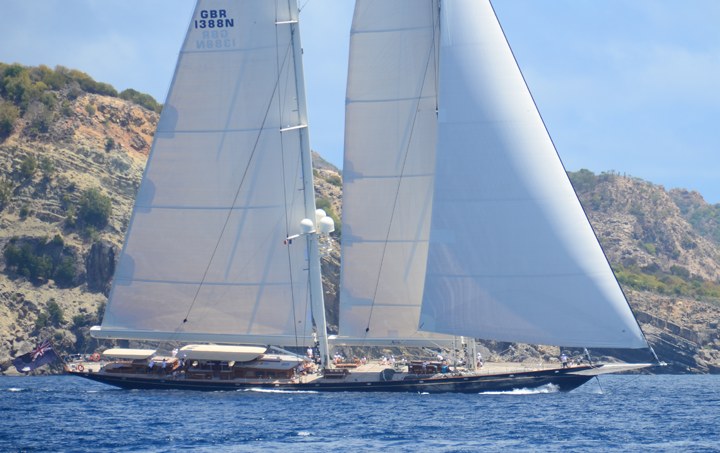
© Latitude 38 Media, LLC
The Bucket management does everything it can to prevent collisions, which could be multimillion dollar catastrophies. That being the case, each boat has to carry a Safety Officer, whose only job is to prevent collisions, and each boat is provided with a Nikon rangefinder to make sure they keep a minimum distance of 140 feet.
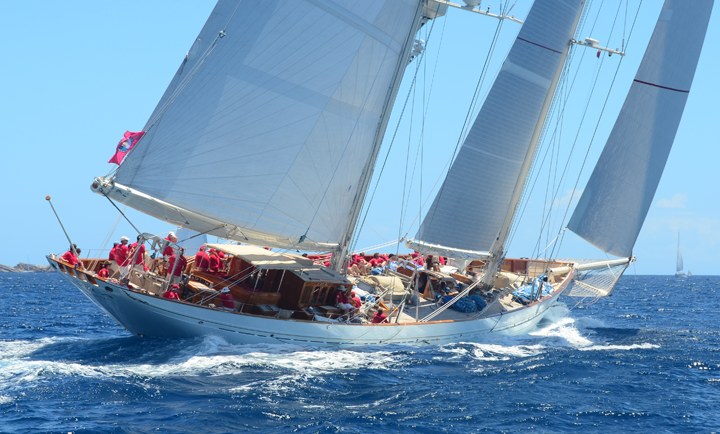
© Latitude 38 Media, LLC
Despite the presence of five J Class yachts, all sailed by world-class sailors, the overall winner of the Bucket was Adela, a 181-ft schooner that was built of timber and steel in 1903, decades before any of the Js. She was nearly entirely rebuilt in 1995, and refitted several more times after that. Her skipper is Greg Perkins, who we first met at the St. Francis Big Boat Series in 1987 when he was on the maxi Ondine. But Adela‘s driver is St. Martin’s Shag Morton, the ultimate antithesis of today’s typical corporate-looking big boat helmsman. Although slightly mellowed by age and family, the irrepressible Morton is not only a great big boat driver — he drove Adela to victory in the Superyacht Challenge Antigua in January, too — we know him as one of the most hilarious one-of-a-kind characters in the Caribbean. There was also a guy named Dennis Conner aboard, who apparently did a little bit of driving and critiqued the crew’s performance each day.
J Class honors went Hanuman, which had four bullets. She’s a more modern version of Endeavour II, owned by Silicon Valley’s Jim Clark.
But forget the results, the Bucket was all about beauty under sail, and one of the few times it was actually better to be a voyeur than a participant.
